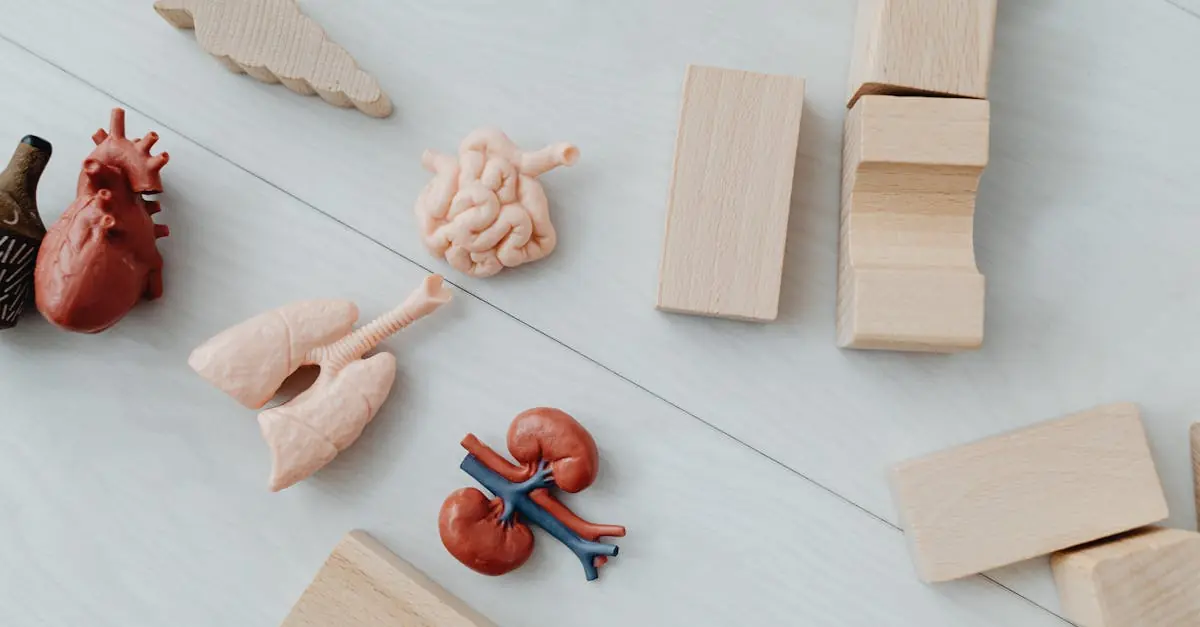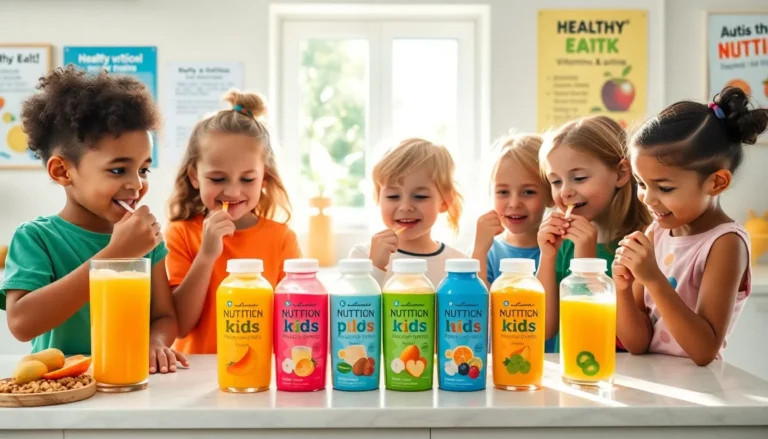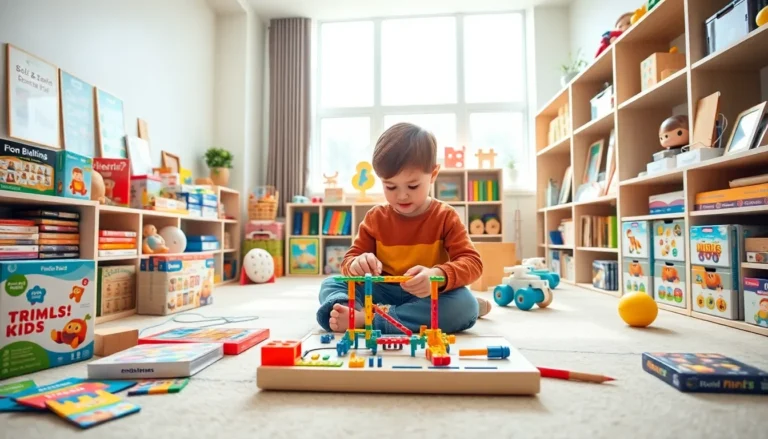Choosing the right educational toys can feel like navigating a minefield of options. With so many choices out there, it’s easy to get lost in a sea of colorful plastic and flashy marketing. But fear not! Finding the perfect toy doesn’t have to be a chore; it can actually be a fun adventure.
Table of Contents
ToggleUnderstanding Educational Toys
Educational toys promote learning through play, fostering skills in various domains. They cover a spectrum of developmental needs, catering to physical, cognitive, and social growth. Parents and caregivers often seek toys that stimulate curiosity and creativity.
When selecting these toys, consider the child’s age and developmental stage. Age-appropriate toys encourage engagement, ensuring tasks align with capabilities. For instance, building blocks may suit toddlers, while STEM kits benefit older children.
Effectiveness and safety are crucial factors. Look for toys that meet safety standards and are free of harmful materials. Additionally, enhancing problem-solving skills, critical thinking, and motor skills contributes to educational value.
Versatility plays a significant role in choosing a toy. Toys that can serve multiple purposes provide longer-lasting appeal. For example, a toy that allows building and imaginative play promotes creativity beyond simple functions.
Educational toys also facilitate social interaction. Options like board games or group activities encourage collaboration and communication, which aid in developing social skills. Engaging with peers while playing offers shared learning experiences.
Researching brands and reviews can provide insight into the toy’s educational potential. Selecting well-regarded products, grounded in educational philosophies, often leads to better outcomes. Look for toys backed by child development experts or educational organizations.
Remember to prioritize experiences over material items. Toys that offer opportunities for guided play, mindfulness, and reflection foster richer educational encounters. Always ensure that the fun aspect remains at the forefront, making learning an enjoyable journey.
Key Factors to Consider
Selecting educational toys involves several key factors that enhance a child’s learning experience. By focusing on these elements, parents can make informed choices that support their child’s development.
Age Appropriateness
Age appropriateness plays a critical role in toy selection. Toys designed for specific age groups align with children’s developmental milestones. For instance, infants benefit from soft toys that stimulate sensory exploration, while older children engage more with puzzles that challenge problem-solving skills. Considering a child’s interests further enhances engagement. Finding toys that match these developmental stages ensures that children derive maximum educational value.
Developmental Benefits
Developmental benefits remain at the forefront of educational toy selection. Toys that foster creativity, critical thinking, and fine motor skills contribute to holistic growth. Building blocks, for instance, promote spatial awareness while encouraging imaginative play. Educational games that require teamwork enhance social skills through collaboration. Parents should seek toys that integrate multiple learning aspects, effectively nurturing cognitive, physical, and social development.
Safety Standards
Safety standards are essential when choosing educational toys. Opting for toys that meet established safety criteria minimizes risk. Parents should look for certifications from organizations like ASTM and CPSC, indicating compliance with safety regulations. Materials used in toy construction also matter; non-toxic, durable materials support safe play. Regularly checking for recalls ensures that toys remain safe over time, providing peace of mind while children explore and learn.
Types of Educational Toys
Various types of educational toys enhance learning through interactive and engaging play. Each category serves unique developmental needs, making it essential to explore the options available.
Interactive Toys
Interactive toys encourage active participation and engagement. These toys often incorporate sounds, lights, or touch sensitivity, fostering sensory exploration. Children learn about cause and effect through these interactions. They also facilitate language development by prompting conversations and encouraging storytelling. Selecting toys like tablets with educational apps or plush toys that respond to touch promotes cognitive growth in a fun and engaging way.
Building and Construction Sets
Building and construction sets stimulate creativity and problem-solving skills. Children manipulate pieces to create structures, which teaches spatial awareness and fine motor skills. These sets often vary in complexity, catering to different age groups. They can include blocks, magnetic tiles, or LEGO sets that encourage experimentation. Engaging with these toys prompts children to think critically as they overcome challenges during the building process, enhancing their engineering skills.
Creative Arts and Crafts
Creative arts and crafts toys provide opportunities for self-expression and imagination. Materials such as paints, clay, and drawing tools allow children to explore various artistic mediums. These activities boost fine motor development as they manipulate different art supplies. Engaging in arts and crafts can also lead to discussions about colors, textures, and techniques, enriching a child’s vocabulary. As children create, they gain confidence in their abilities and learn to appreciate the value of creativity.
Tips for Choosing the Right Toy
Selecting the right educational toy requires consideration of various factors. Parents can enhance their choices by focusing on their child’s preferences and needs.
Observation of Interest
Noticing a child’s preferences can guide toy selection. Parents should pay attention to what captivates their child’s attention during playtime. Engaging toys often match their interests, whether it’s animals, vehicles, or creative arts. Ensuring toys align with these interests fosters deeper engagement. Parents may also observe how their child interacts with different toy types. For example, if a child enjoys building blocks, choosing construction sets promotes further development in spatial awareness and creativity.
Balancing Fun and Learning
Finding a blend of fun and educational value is crucial. Toys that encourage playfulness while promoting learning offer the best of both worlds. Look for toys that stimulate creativity, critical thinking, and motor skills without sacrificing enjoyment. A game that teaches math concepts through interactive play not only entertains but also educates. Additionally, interactive toys invite active participation, helping with language development and problem-solving skills. Balancing these aspects can lead to a rewarding and enjoyable learning experience.
Setting a Budget
Establishing a budget helps in selecting the right educational toys without overspending. Setting a clear limit assists parents in making informed decisions, ensuring that financial constraints are respected. Review options within the budget to find high-quality toys meeting safety standards. Investing in durable, educational toys can save money in the long run. Moreover, parents may also research sales and discounts to maximize value. Prioritizing quality over quantity often results in better educational opportunities for their children.
Choosing the right educational toys can be a rewarding experience for both parents and children. By focusing on age appropriateness, developmental benefits, and safety, caregivers can ensure that their selections support holistic growth. Versatile toys that encourage creativity and social interaction offer lasting engagement and valuable learning opportunities.
It’s essential to pay attention to a child’s interests and preferences, as this alignment enhances playtime enjoyment. Prioritizing quality over quantity while setting a budget can lead to more meaningful educational experiences. Ultimately, the right educational toys can ignite a child’s curiosity and foster a lifelong love for learning.





